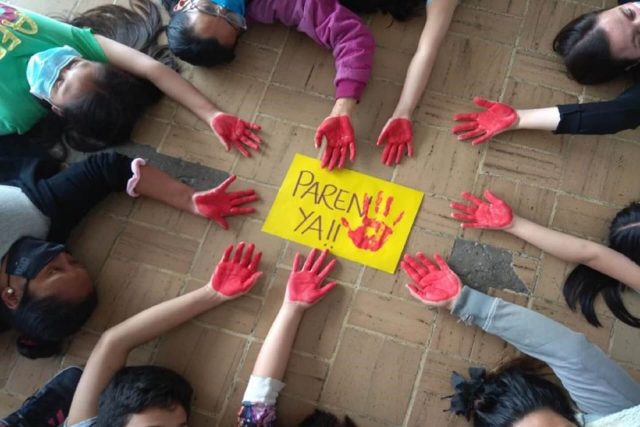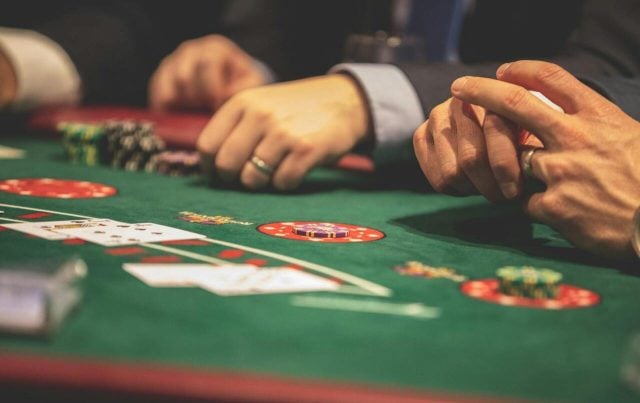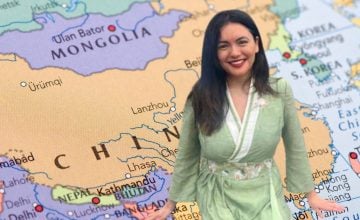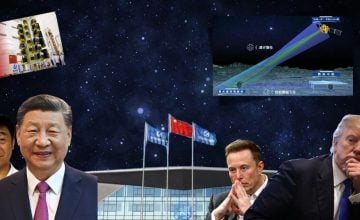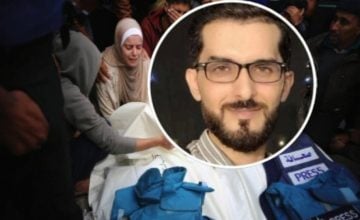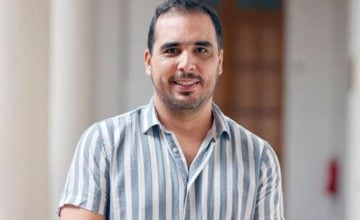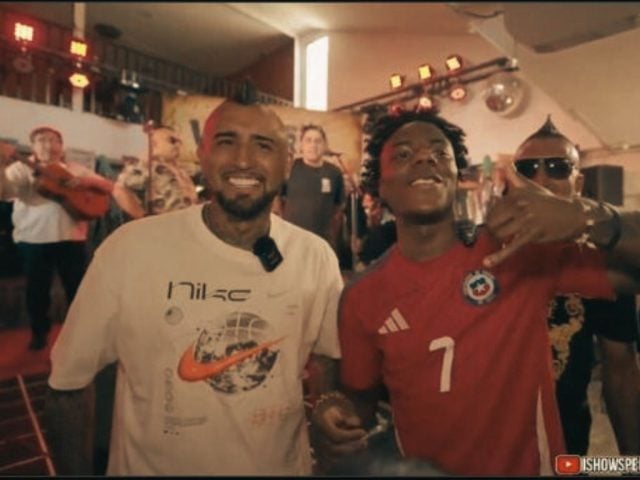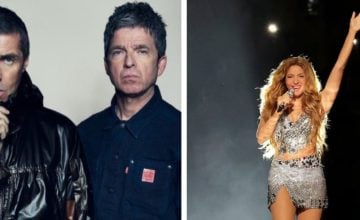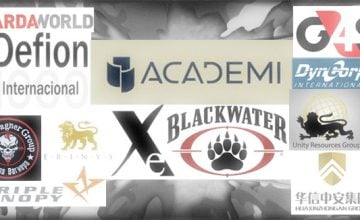Even before Gustavo Petro won the presidential elections in Colombia, analysts agreed that the problem of security would be one of his greatest challenges. Beyond the role of the State as its guarantor, the focus is on the illegal armed groups that occupy more than a third of the country and that represent a constant threat to life and peace.
Petro inherits a claim that comes from the most remote places throughout the country: greater State presence, which translates into more prevention and accompaniment than militarization and confrontation.
Precisely its in the rural areas, where the leader of the Historical Pact reached the highest levels of favourable votes together with his running mate, Francia Márquez, where this challenge is most significant because these areas were the closest to the violence imposed by armed organizations than that of the government.
The action of these irregular structures has spread to 420 municipalities in Colombia, which represents 37% of the territory, according to the Peace and Reconciliation Foundation (Pares) in its report ‘Bullets (plomo) is what there is’.The violence that exists in Colombia
Petro assumes the mandate in the midst of the resurgence of the violence and the confrontation for territorial control, which translates into homicides, victims of antipersonnel mines and internal displacement, according to the report ‘The sources of the conflict in Colombia‘, made by the Institute of Studies for Development and Peace (Indepaz).
In this scenario is the Clan del Golfo, the main and most dangerous drug-criminal organization in the country, followed by the guerrillas of the National Liberation Army (ELN) and the Gentil Duarte and Segunda Marquetalia structures, which are part of the dissidence of the extinct Armed Forces of Colombia (FARC).
Regarding the deaths of social leaders, although there is no information on just how big the number of murders is, according to Pares, the FARC dissidents would be the main responsible for these crimes, followed by the Clan del Golfo, the ELN and the Public Force.
As a way of approaching the issue of violence from another angle, the president-elect spoke in the campaign of his willingness to dialogue. It will be from August 7 when he will have the opportunity to demonstrate if there can be negotiations with the National Liberation Army (ELN) and with other groups that have not shown interest in having rapprochements.
On the other hand, 22 narco-paramilitary structures operate in the South American country, of which six carry out «recurring actions» and cause «greater damage», mainly in the departments of Antioquia, Bolívar, Córdoba, Norte de Santander and Meta, according to the report.
Of the 1,103 municipalities in the country, 291 had narco-paramilitarism activity during 2020, which represents 27 of the 32 departments in the country.1- The Clan del Golfo (Gulf Clan)
The Clan del Golfo or the Gaitanista Self-Defense Forces of Colombia (AGC), made up of some 1,700 members, has operations in 80% of Colombian territory where there are paramilitary groups, which means that they have «the largest scope of action in the country», according to Indepaz.
Its top leader, Dairo Antonio Úsuga David, alias ‘Otoniel’, was extradited to the US last May. Due to this, the organization intensified its actions of violence and that same month it decreed an «armed strike» that surrounded the population of 11 departments of the country, in protest against the judicial decision. Six people died after those attacks.
Its main axis of operation is on the Caribbean and Pacific coasts and in the departments of Córdoba, Sucre, Bolívar, Atlántico, Magdalena, San Andrés, Chocó and Antioquia, according to Indepaz. These places were previously controlled by the FARC.
What do they do?
The Clan del Golfo carries out activities related to drug trafficking, money laundering, illegal mining, rent collection and finance personalities from the artistic, musical and sports spheres. In addition, it has links with political, business and State sectors, says the text ‘The focus of the conflict in Colombia’.
Likewise, it is behind the murders, threats and forced displacement of environmental defenders and members of indigenous communities and they also act as counter-insurgency groups.
This structure assumes the role of a private armed body, carries out “social prophylaxis” operations and exercises – according to them and by their own means – justice.
Its origin
After the demobilization of the United Self-Defense Forces of Colombia (AUC) during the government of Álvaro Uribe, several illegal armed groups were formed, including the AGC.
These structures were called Bacrim (criminal gangs) by the right-wing president, who directly related them to drug trafficking and organized crime. However, that name was changed to Organized Armed Groups (GAO) and Organized Criminal Groups (GDO), as of 2018.
Indepaz points out that by classifying them as organized crime, their paramilitary origin and their bloody criminal practices are minimized. Other analysts point to an alleged collusion of the Clan del Golfo with the Government and the main political, economic and military groups in the country.2- The ELN
The ELN is the longest active guerrilla group in Colombia, having gone through several failed peace negotiations with governments over the last 30 years.
The possibility of disarming this guerrilla, made up of 2,450 members, is one of Petro’s pending points, which referred to the resumption of talks to finally reach a peace agreement.
This armed group, formed in 1964, is currently the second with the largest presence in the country. It affects 211 municipalities and 23 departments, among which Antioquia, Arauca, Cauca, Chocó and Norte de Santander stand out.
Broken negotiations
In February 2017, the ELN began negotiations with the government of Juan Manuel Santos. The following year, after the triumph of Iván Duque, the incoming president said that he would evaluate the continuity of the negotiations under new conditions. Later, he asked them to release the detainees and to make a unilateral ceasefire.
In January 2019, Duque definitively suspended the dialogue after the attack on the Francisco de Paula Santander Cadet School in Bogotá, which left more than 20 dead and 60 wounded. The ELN claimed responsibility for that attack.
This armed group, classified as terrorist by the Government, suffered a significant loss in October 2020 with the death of Andrés Felipe Vanegas Londoño, alias ‘Pedro’ or ‘Uriel’, as a result of an operation by the authorities.
‘Uriel’ was the third chief of the ELN’s Western War Front, in the department of Chocó. In addition, he was one of the alleged perpetrators of the attack on the Cadet School.
What is expected
In mid-June, the ELN announced its willingness to resume talks with the Petro government and assured in a statement that it wanted to «advance a peace process that gives continuity to the talks started in Quito in 2017». However, in the same text it stated that «it keeps its system of political and military struggle and resistance active».
Petro, who has said that «the time for peace has come» both for that guerrilla and for other armed groups, raised the need for a bilateral ceasefire.
From what the leader of the Historical Pact has revealed, the process would be similar to the one that occurred with the FARC because «judicial negotiations, in most cases, and political negotiations» will be included in order to «end the war In Colombia».
Another point that should be on the table between the governments of Venezuela and Colombia, whose diplomatic relations are expected to resume, is the constant mutual accusations of protecting armed groups in their respective countries for destabilizing purposes.
Throughout his term, Duque referred to an alleged ELN presence in Venezuela, where – according to him – it was receiving the support of the government of the neighboring country. However, on the only occasion in which the Colombian president tried to support his complaint, there was an error.
In 2019, Duque presented some images to the United Nations (UN) with alleged members of the armed group in Venezuelan territory. The veracity of the photos was questioned by the Colombian media itself, which showed that they had been made in Colombian soil years ago.
In which direction is the ELN heading to?
In its report, Indepaz maintains that the ELN does not seem to have «a strategy of confrontation with the Armed Forces» or of power and that «it focuses on the defense of areas of influence and the control of subregions».
Among its actions is the recruitment of minors, Afro-descendants and indigenous people, collection of extortions, kidnappings, installation of anti-personnel mines, imposition of curfews and displacement of the population. Similarly, they carry out activities such as cattle theft, illegal mining, drug trafficking and illicit crops.3- FARC dissidents
In Colombia there are 30 post-FARC structures or dissidents, which have been configured into three large independent and disjointed groups. Currently, according to the Indepaz study, they do not have a common insurgent project nor do they represent «a war scenario» as before the peace agreement.
According to the United Nations (UN), 95% of the 13,000 ex-combatants who accepted the agreement still remain demobilized. However, the whereabouts of the remaining 5% are unknown and there is no certainty as to whether they are part of the armed group or whether there have been new recruitments.
In 2020, they operated in 123 municipalities and 22 departments of the South American country.
The dissidents or Residual Organized Armed Groups (GAO-r), as the government calls them, are made up of ex-combatants who did not join the peace agreement or by those who abandoned it.
The groups with the most impact in the country are the Southeastern Bloc or Gentil Duarte, who did not want to participate in the disarmament process; and the Segunda Marquetalia, made up of those who returned to the jungle arguing that the State failed to comply with what was agreed, and the Comando Conjunto de Occidente (Western Joint Command), which was not included by the FARC in the negotiations.
Gentil Duarte
Unlike ‘Iván Márquez’, Miguel Botache, known as ‘Gentil Duarte‘, did not wait for the implementation of the peace agreement to take up arms and join the First Front of the extinct FARC.
Botache was reported as deceased by the Colombian Government in May of this year. According to this version, the leader of the Southeast Bloc was found in Venezuela, which is part of Bogotá’s constant accusation of Caracas’ alleged support for these irregular groups.
The cause of death was denied by the Central General Staff of that faction of the dissident group, which blamed the Colombian State and the US Embassy in that country for his assassination. They stated that they assassinated him in a «cowardly» manner and «in a creepily way» in an attack with an explosive located under his bed.
After Botache’s death, it was presumed that the group was led by Néstor Gregorio Vera Fernández, alias ‘Iván Mordisco’, who accompanied ‘Duarte’ when he left the peace agreement, and who was reported dead by the Colombian government after a bombing of the Army and the Police.
Importance of this faction
This armed structure is the third with the most impact in the country and the first of the dissidents. It is made up of some 2,700 people and covers 119 municipalities, according to Pares.
Gentil Duarte operates mainly in the departments of Amazonas, Caquetá, Guaviare, Meta, Putumayo and Vaupés. In these areas, it maintains control of the rivers to transport drugs, wood, and cattle that are the product of illegal trade.
In the territories it dominates, there are cocaine processing laboratories and routes for the transportation of supplies for its production. In addition, it owns land belonging to peasants.
This dissident faction has had clashes for territorial control with the ELN and the Segunda Marquetalia.
Segunda Marquetalia
This is one of the armed groups most persecuted by the Government. This faction, made up of 2,000 members, was under the command of Luciano Martín, alias ‘Iván Márquez’, who participated in the peace negotiations in 2016 and withdrew from the process in 2019, alleging that the State betrayed the peace agreements.
In a video released to announce his return to the jungle, Márquez said that «the new Marquetalia» had begun, referring to the FARC’s birthplace half a century ago. The guerrilla was accompanied by Seuxis Paucias Hernández Solarte, known as ‘Jesús Santrich’, whose death was confirmed by that group in May 2021.
About Márquez, there is no definitive information. While the Casa de Nariño does not rule out his death, the Segunda Marquetalia issued a video stating that he «suffered minor injuries» in the attack perpetrated against him in neighboring Venezuela on June 30.
Violence and casualties
This faction, which has increased its levels of violence to achieve territorial control – according to Indepaz – carries out drug trafficking, illegal mining and extortion activities. Similarly, it is responsible for threats, forced displacement among the peasant and indigenous population, confinements, recruitment and use of minors.
In less than a year and a half, the Segunda Marquetalia has suffered a dozen important casualties, including those of Hernán Darío Velásquez Saldarriaga, alias ‘El Paisa’, and Henry Castellanos Garzón, alias ‘Romaña’, who, according to Bogotá , were hiding in the neighboring country, under Maduro’s consent.
Although Márquez’s promise upon taking up arms was to coordinate efforts with the ELN and other guerrilla groups, some analysts point out that this objective has not been fulfilled due to conflicts over territorial control and illicit economies. In addition, the group, which has a presence in 61 municipalities in the country, has not been able to occupy the spaces taken over by the FARC.
